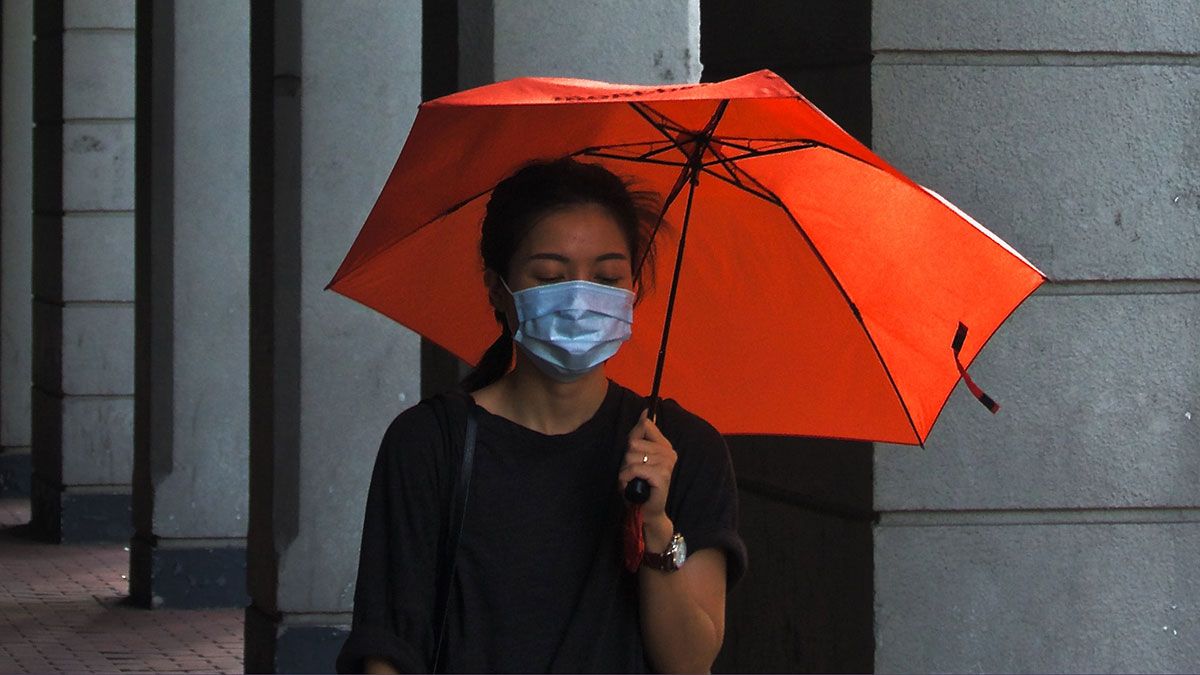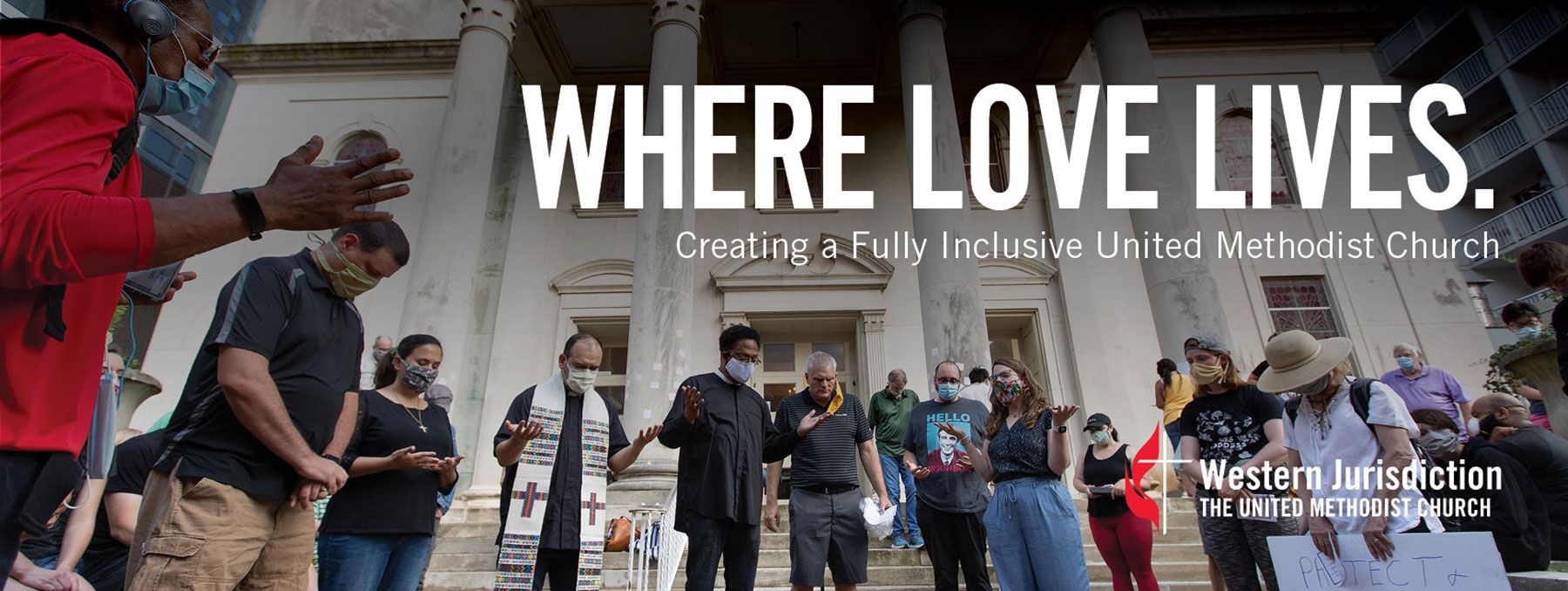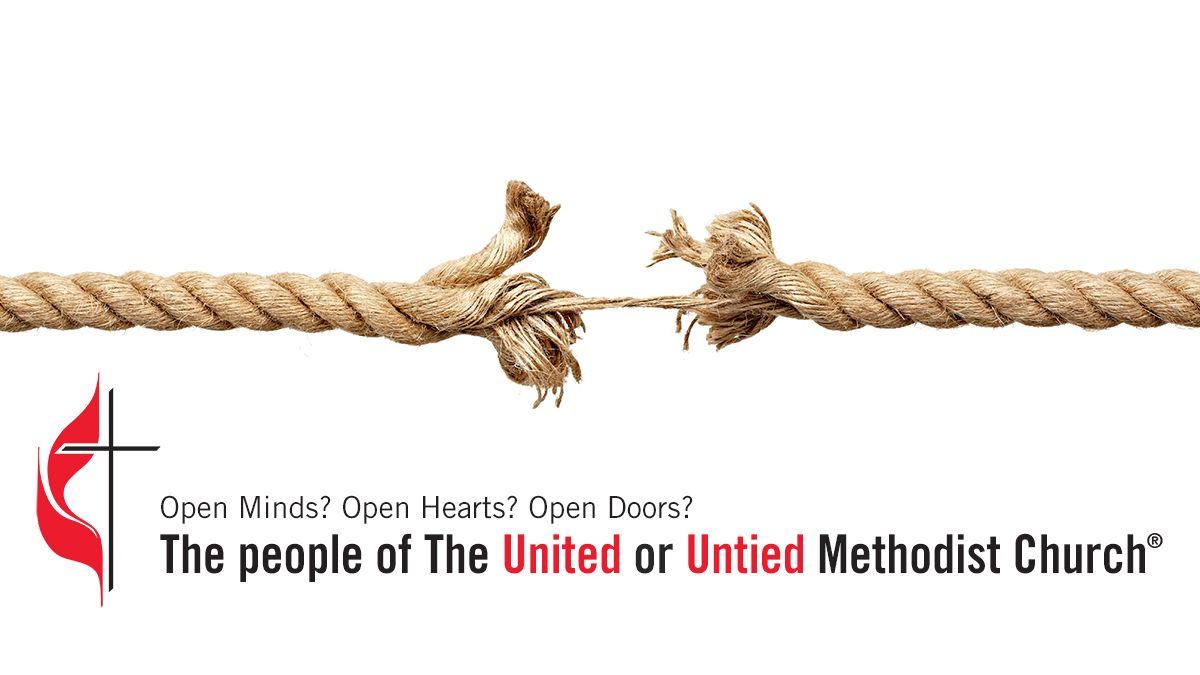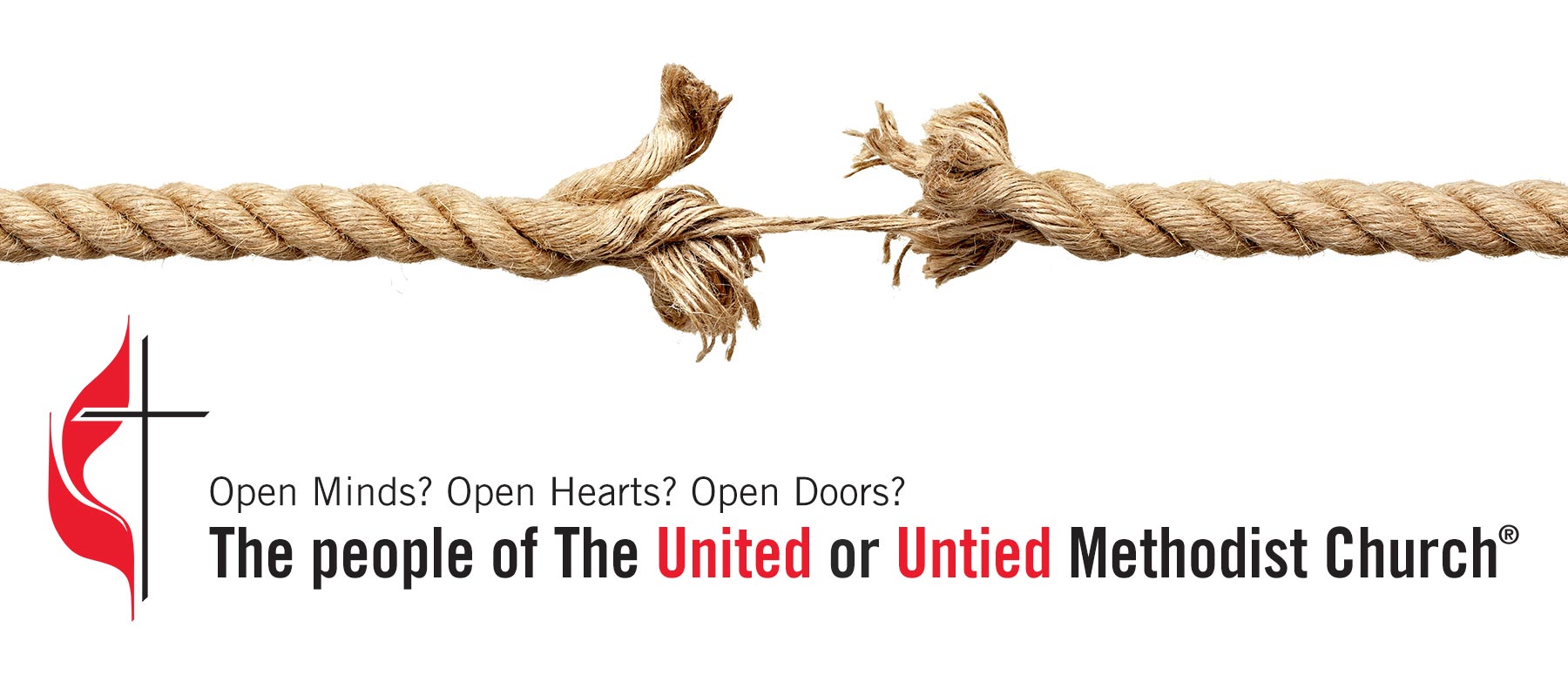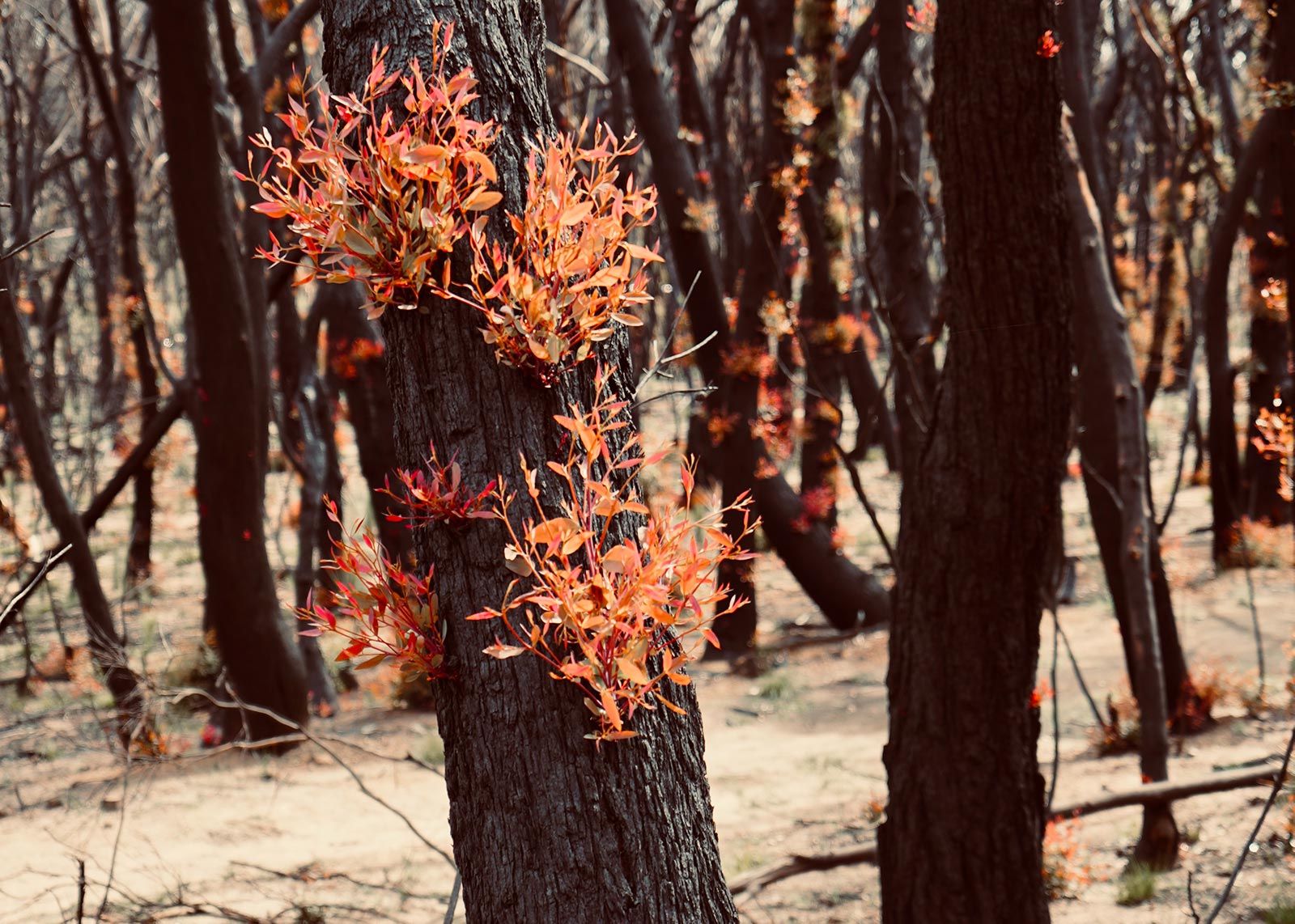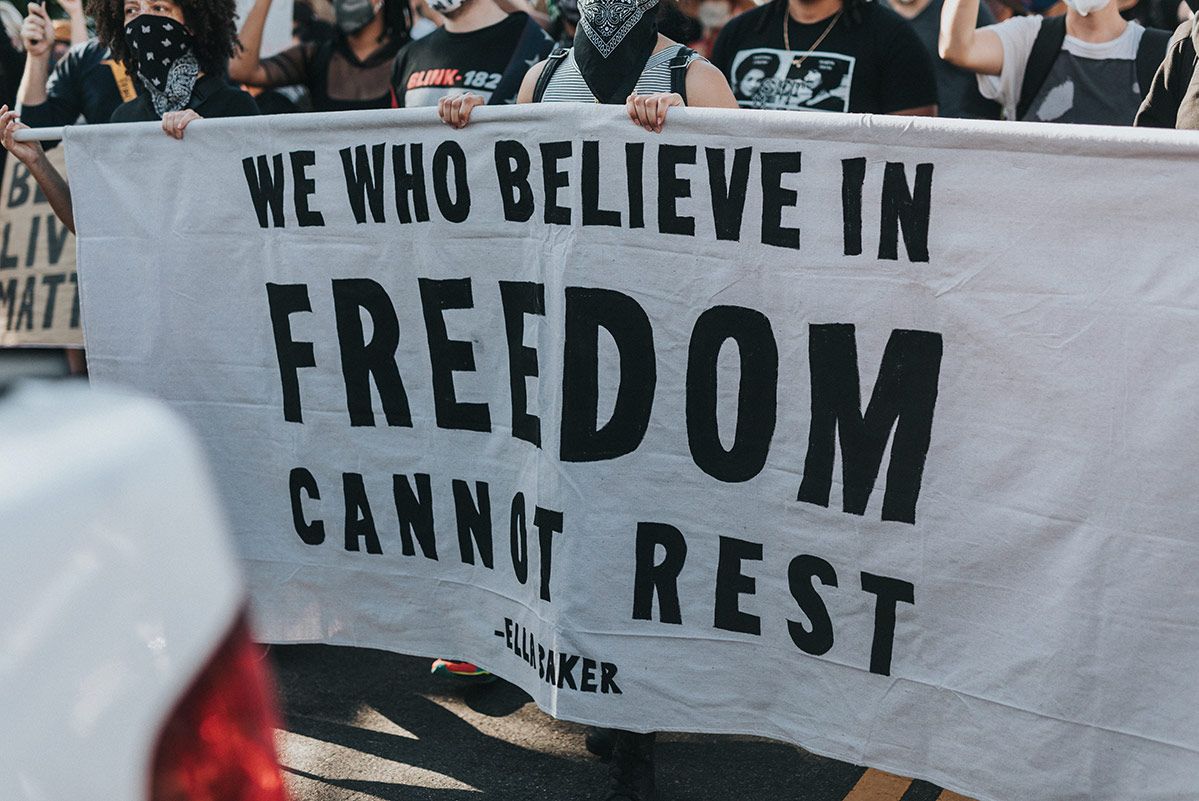Convirtiéndonos en anti-racistas: desmantelando el racismo
Discurso episcopal Parte II (Parte I) | 8 de septiembre de 2020
En fidelidad al modelo de inclusividad de Jesús sobre el amor y la justicia, como obispa del Gran Área del Noroeste de la Iglesia Metodista Unida, estoy comprometida a liderar a los Metodistas Unidos en la Conferencia de Alaska, la Conferencia de Oregón-Idaho y la Conferencia del Noroeste del Pacífico para desmantelar el racismo sistémico en la iglesia y en toda la sociedad como una prioridad misional de largo alcance.

El Pecado Original es tomar lo que no es tuyo.
Después de estudiar las Escrituras y observar cómo las personas abusan de su poder de muchas maneras ingeniosas, he llegado a creer que el pecado original es tomar lo que no es tuyo. Piense en Adán y Eva en el jardín con abundantes alimentos, animales y plantas, proporcionados por un Creador generoso. Buen clima. Buena compañía. Y todo lo que Dios les pide es que no toquen un árbol. Tu puedes tenerlo todo. Disfruta de todo en este jardín, pero no comas la fruta de este árbol. Pero no pudieron resistir la tentación. Tomaron la fruta que no era de ellos y se la comieron.
Con este pequeño acto, se rompió todo el equilibrio entre el creador y las criaturas humanas.
Tomar lo que no es tuyo no es solo el pecado original, es un pecado impregnado en toda la familia humana. ¿Qué crees que es la violación o el tráfico sexual, es sino una invasión de los derechos sobre el cuerpo, la privacidad y la autonomía de otra persona?
¿Cuál es la negativa a reconocer el autoconocimiento y la identificación de una persona como LGBTQ? ¿El abuso infantil no le roba al niño/a la inocencia, la confianza y la seguridad? ¿Qué es la confiscación y expulsión de los nativos americanos de sus tierras ancestrales y la represión de sus idiomas y culturas, sino una toma de lo que no es tuyo? El internamiento de japoneses estadounidenses durante la Segunda Guerra Mundial. Invasiones y ocupaciones armadas. Piense en la separación de los niños/as de sus padres en la frontera entre Estados Unidos y México. Los empleadores que toman cruelmente la salud de los trabajadores al exponerlos a pesticidas, polvo de carbón o COVID-19. Los seres humanos son astutos en la forma en que se niegan unos a otros la plenitud de la vida que Jesús vino a darnos para que la disfrutemos (Juan 10:10). Lo que pasa con el pecado original es que es difícil renunciar al dulce sabor de la manzana robada.
Hoy quiero hablar con ustedes sobre el pecado original de la esclavitud y su legado perdurable de racismo, especialmente, aunque no exclusivamente, el racismo anti-negro en Estados Unidos.
Una palabra profética para mis hermanos que son victimas del racismo sistémico
Isaías 54
11 ¡Oh, afligido, azotado por la tormenta y no consolado,….
13 Todos tus hijos serán enseñados por el Señor,
y grande será la prosperidad de tus hijos.
14 En justicia serás establecido;
estarás lejos de la opresión, y nada tendrás que temer;
y el terror se apartara de ti, porque no se acercará a ti.
15 Si alguno suscita contiendas,
no ser de mi parte;
el que suscita contiendas contigo
caerá ante ti….
17 Ningún arma que se forme contra ti prosperará,
y refutarás toda lengua que se levante contra ti en juicio.
Esta es la herencia de los siervos del Señor
y su reivindicación de mí, dice el Señor.
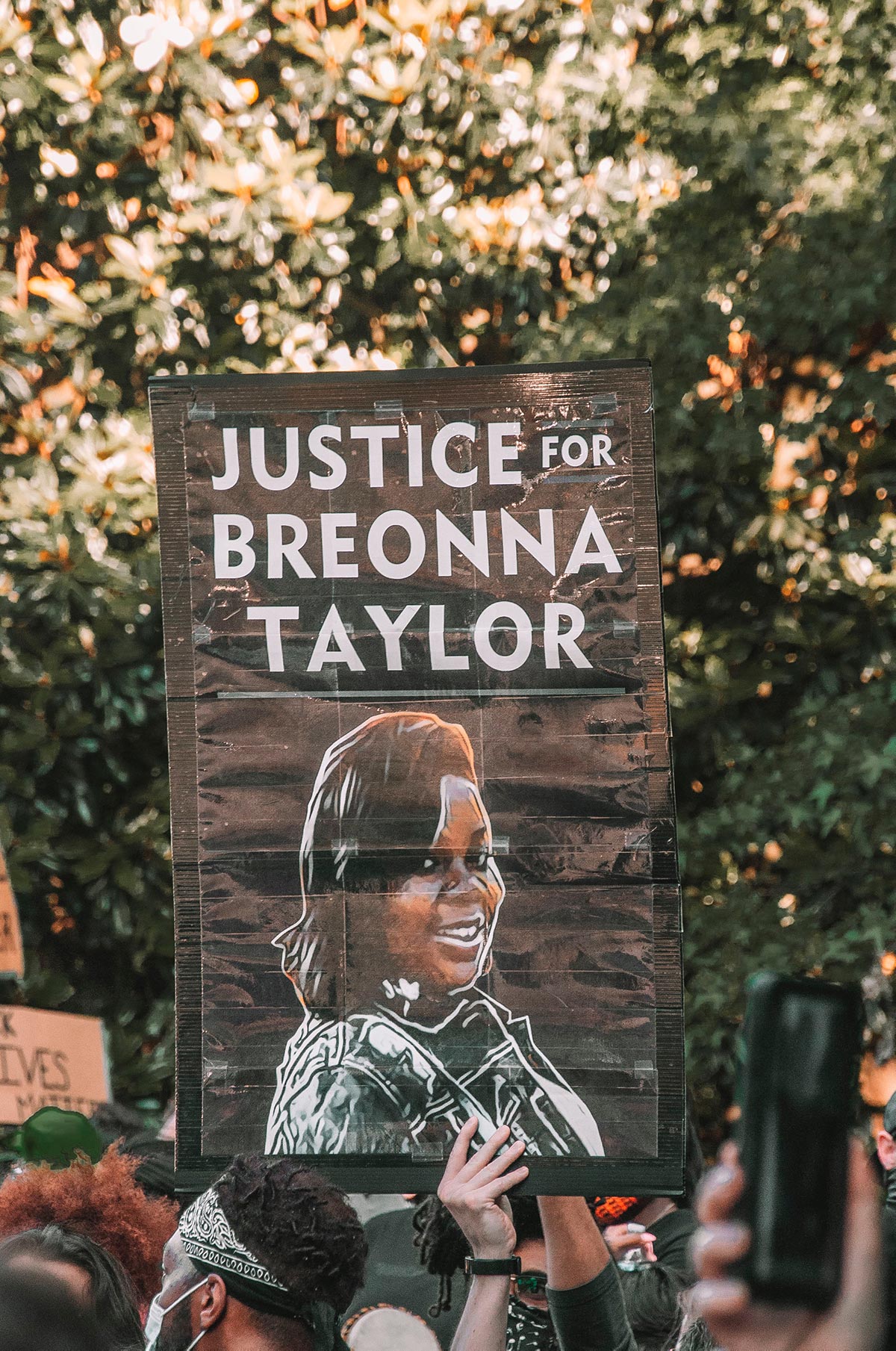
Amigos, les hablo primero a ustedes que sufren a manos de los opresores, a ustedes, a quienes no se les ha mostrado dignidad y respeto, ni se les han otorgado los derechos que Dios soplo a cada miembro de la familia humana en la creación.
Me dirijo, en particular, a aquellos que llevan la carga acumulada de siglos – generaciones – de supremacía blanca, y que diariamente sienten la mirada de la desconfianza, la sospecha, la acusación, la exclusión, el odio, el rechazo.
Estoy aprendiendo a escuchar y ver que en Estados Unidos, los sistemas que llamamos iguales, justos y equitativos – igualdad de oportunidades, justicia penal, vivienda justa – tienen injusticias y prejuicios incorporados. Estoy aprendiendo a escuchar y ver que el prejuicio racial implícito, [i] omnipresente entre la gente blanca en Estados Unidos, asegura que la policía blanca, maestros, jueces, oficiales de libertad condicional, congresistas, funcionarios electorales, asistentes de estacionamientos, vecinos y extraños lleven a cabo su trabajo y vidas con sospecha de las personas de color y con una preferencia que no es favor de los pobres y marginados, sino por los blancos. Esto es lo que se llama privilegio blanco.
Estoy aprendiendo a oír y ver que durante más de 500 años, la iglesia cristiana ha concedido a los exploradores europeos permiso para “invadir, buscar, capturar, vencer y someter” a todos los musulmanes, paganos y enemigos de Cristo, “los reinos, los duques”. , principados, dominios, posesiones y todos los bienes muebles e inmuebles que posean para reducir a sus personas a la esclavitud perpetua … y convertirlos para su uso y beneficio ”. [ii]
Estoy aprendiendo cómo en Estados Unidos, la esclavitud de los cuerpos negros no terminó con la abolición de la esclavitud y la emancipación de las personas esclavizadas, sino que la esclavitud continuó a través de la segregación de Jim Crow y la negación del voto a los ciudadanos negros. Cuando las Leyes de Derechos Civiles y Derecho al Voto desmantelaron la segregación de Jim Crow en la década de 1960, no se erradicó el control de los cuerpos y las vidas de los negros, se incrustó en otros lugares: la Guerra contra las Drogas, detención, registro, arrestos desproporcionados, condenas de negros ciudadanos, especialmente hombres, y en la negación de acceso a programas de asistencia pública, y el derecho a votar o servir en un jurado para delincuentes condenados. [iii]
Los teléfonos inteligentes y las redes sociales han abierto una ventana a la opresión racial en Estados Unidos; que había sido negada, ocultada e ignorada durante generaciones.
Recuerdo y vuelvo a decir sus nombres: Trayvon Martin, Walter Scott, Michael Brown, Philando Castile, Freddy Gray, Eric Garner, Tamir Rice, Sandra Bland y muchos más que nunca llegaron a los titulares. Los desesperados últimos suspiros de George Floyd, grabados en video, y la implacable crueldad del oficial de la ley que le quitó la vida cuentan una historia innegable. Ocho minutos y 46 segundos; cuando la rodilla del oficial presionó el cuello de George Floyd contra el pavimento, hubo mucho tiempo para que el oficial se detuviera, pensara y reevaluara la situación. Era tiempo suficiente para reconocer que el Sr. Floyd no era una amenaza para él, para reconocer que la presunta ofensa era una insignificancia comparada con la sentencia de muerte que el oficial ejecutó – mucho tiempo para escuchar la voz de Dios, y las voces de los transeúntes gritando: ” ¡DETENENTE! Este es mi hijo amado. Lo estás matando “. Y Ahmaud Arbery, perseguido por hombres que tenían un plan, lo acecharon y lo mataron. Rayshard Brooks, asesinado a tiros por la policía en un drive-thru de Wendy’s. Breonna Taylor, en su propia casa durmiendo. Jacob Blake, siete disparos por la espalda. Su disparo fue seguido unos días después por un justiciero blanco, armado con un arma semiautomática, que disparó y mató a dos manifestantes e hirió a un tercero. Que regresó a casa sin haber sido confrontado ni interrogado por la policía.
Una palabra profética para mis hermanos blancos
Isaías 55
6 Busquen al Señor mientras pueda ser hallado,
llámalo mientras está cerca;
7 Dejen los impíos su camino,
y los injustos sus pensamientos;
que se vuelvan al Señor, para que él tenga misericordia de ellos,
y a nuestro Dios, el cual será amplio en perdonar.
8 Porque mis pensamientos no son los tuyos,
ni tus caminos son los míos, dice el Señor.
9 Porque así como los cielos son más altos que la tierra,
así son mis caminos más altos que los tuyos
y mis pensamientos que los tuyos.
Dios miró al pueblo escogido de Dios y vio su pecado. Lo nombró y los llamó a rendir cuentas. Mientras leo este pasaje, escucho la voz de Dios hablando a los estadounidenses de la cultura dominante y a mí en esta temporada de levantamiento contra el racismo, diciendo: “Mis pensamientos no son tus pensamientos. Mis caminos no son los tuyos “.
Lo torcido se enderezará y los caminos ásperos se allanaran (Lucas 3: 5). Deja el camino torcido que has recorrido todos estos años. Esto es una carga severa. Es difícil mirar hacia atrás a su vida, a las enseñanzas de su familia, escuela, iglesia y decir: “Espera un minuto. Quizás nos hemos equivocado en esto. Quizás necesitemos mirar de nuevo, pensar de nuevo, escuchar de nuevo. Tal vez la forma en que se ha ordenado nuestro mundo, todas las cosas que damos por sentado no están bien.
Estoy aprendiendo a escuchar y ver que los estándares, normas y hábitos que me enseñaron a valorar no son universalmente compartidos por todas las personas de todas las culturas. Lentamente, estoy aprendiendo que como líder, si simplemente, inconscientemente, dirijo de acuerdo con las normas culturales que son naturales para mí, inadvertidamente, inconscientemente perpetuaré formas de trabajar y relacionarme que no funcionan para muchos de sus miembros. Y continúo prácticas que silencian los dones, las percepciones y la sabiduría de personas criadas en diferentes contextos culturales. Estoy aprendiendo a reconocer que los blancos y los negros no comparten las mismas experiencias de vida o la misma memoria generacional e interpretación de la historia. Estas diferencias significan que vemos las formas del mundo que compartimos de manera muy diferente. Y cuando escucho a alguien decir algo desde una perspectiva diferente que no tiene sentido para mí y es contrario a cómo siempre lo he pensado, tal vez quiera decir, “¡eso es ridículo!” “Estás loco.” “Déjame mostrarte en qué estás equivocado”. “El mundo simplemente no funciona de esa manera, ¡no puede funcionar de esa manera!” “Déjame enseñarte de la manera correcta”.
Ve, hasta que aprenda a tener oídos para oír, no puedo ver más allá de mi propia perspectiva cultural. Esto es lo que se llama normatividad cultural. [iv]
Un momento revelador
Una noche, tarde, me encontré viajando en un automóvil que le habían pedido prestado a un amigo nativo americano, que se lo había pedido prestado a un pariente. El conductor era un colega negro con una mujer blanca rubia en el asiento del pasajero. Me senté con un joven filipino y un joven hispano gay en la parte de atrás. En una carretera rural oscura y remota de Oklahoma, nos detuvieron por una luz de la parte de atrás del carro que estaba rota. Ninguno de nosotros era de Oklahoma. Ni siquiera dos de nosotros éramos del mismo estado. No sabíamos el nombre de la persona de la cual estaba registrado el automóvil. En ese momento, experimenté algo de lo que no sabía nada: conducir cuando eres negro. Nuestro entrenamiento de conducción repentinamente serio y atento se puso en marcha:
- Sea callado y respetuoso
- Nadie habla excepto yo
- No actúes. Nada de bromas
- Sin movimientos rápidos
No pasó nada malo esa noche, pero era fácil ver cómo podría haber sucedido, si el registro del automóvil o la licencia de conducir habían expirado, si había una multa de estacionamiento sin pagar o no había varios clérigos en el automóvil. Supongamos que nuestro conductor hubiera estado solo en el coche. Supongamos que el oficial hubiera estado de mal humor. ¿Quién hubiera sabido y dicho la verdad? Nunca dudaré del peligro real y el miedo de conducir mientras eres de la raza negra.
Sin los videos, las inaceptables acciones policiales que presenciamos en ciudades de todo Estados Unidos nunca hubieran visto la luz del día. Se habría tejido una historia que “justificaba” acciones policiales injustificables:
- el sospechoso estaba amenazando
- la policía actuó en defensa propia o pensó que había un arma
- la evidencia se pierde, se manipula o se suprime
- los testigos no son creíbles
- o simplemente no se presentan a testificar
Debido a que los teléfonos inteligentes se han convertido en algo común, las personas pueden arrojar luz sobre un patrón de abuso de poder que no se ha reconocido ni abordado durante demasiado tiempo. El racismo endémico y sistémico ahora se enfrenta a los estadounidenses blancos que han podido fingir que no existía o que lo han tratado de explicar.
Este año, en esta temporada, mientras vemos protestas que continúan después de cuatro meses, cada uno de nosotros tiene que decidir si prestar atención a la evidencia y reevaluar si el racismo está vivo y coleando en nuestro mundo, o si continuaremos engañándonos al negar la evidencia.
¿Continuaremos minimizando el papel del racismo en los eventos que vemos y adoptaremos teorías de conspiración que nos protegen de tener que enfrentar un pecado duro y profundo en nuestra sociedad?
Por eso les hablo de esto hoy. Estados Unidos se ha roto desde que se podía ganar dinero secuestrando, encarcelando, enviando como cargamento a través del océano y literalmente entregando desde África cuerpos negros al nuevo mundo, llevando africanos, para venderlos a los que los esclavizaban para que construyeran la nación más rica del mundo a sus espaldas. Y todos estos años después, las profundas heridas causadas por ese pecado original no han sanado.
Pero hoy tenemos la oportunidad, en esta generación, de aprender a escuchar y ver lo que no hemos querido admitir: que nuestra nación no es justa, los derechos no son iguales y los sistemas no son justos. Y tenemos la oportunidad de caminar con Jesús por un camino recto que podría conducir a una comunidad justa, equitativa y amada.
¡Quiero ser parte de ese proyecto! ¿tu no?
Y sin embargo, incluso cuando digo que quiero ser parte del proyecto de desmantelar el racismo en el Gran Noroeste, en la Iglesia Metodista Unida, en la familia humana, puedo sentir un poco de miedo en mí. Tendré que renunciar a algo por la justicia. La justicia no me habría dado todas las ventajas de las que disfruto. La justicia de Dios enaltecerá a los humildes y humillará al resto de nosotros (Lucas 1: 52).
¿Qué pasa si yo, si nosotros, nos aventuramos fuera de los valores, creencias y formas de vida que he pasado toda mi vida aprendiendo?
¿Qué pasa si no podemos encontrar un camino a seguir? ¿Y si es un desierto y no una tierra prometida? Bueno, amigos, ya estamos en el desierto, ¿no crees? ¿Tenían razón los israelitas al dejar la esclavitud en Egipto en busca de algo mejor?
¿Y sabes lo que Dios nos dice a nosotros mismos que estamos temerosos? No le tengas miedo a la naturaleza. Has estado ahí antes. Hay una forma mejor que como están las cosas ahora. Te mostraré el camino. Da un paso hacia el camino de la relación correcta.
No temáis. El amor perfecto echa fuera el miedo.
Los miembros de su gabinete y yo estamos dando un paso adelante en el amor, y espero que los Metodistas Unidos de Alaska, Iritis Columbia, Idaho, Oregon y Washington se unan a nosotros en una caminata del miedo al amor.
Desmantelando el racismo y creando una comunidad amada
Filipenses 2:1, 3-5
Si, entonces, hay algún aliento en Cristo, algún consuelo del amor, alguna participación en el Espíritu, alguna compasión y simpatía…. No hagáis nada por egoísmo o engreimiento, sino consideraos con humildad a los demás como mejores que vosotros. Que cada uno de ustedes no mire por sus propios intereses, sino por los intereses de los demás. Sea en ti la misma mente que estaba en Cristo Jesús …
Cuando la Primera Iglesia Metodista Unida de Boise, conocida como la Catedral Rocosa, fue construida y dedicada en 1960, incluía un vitral con la imagen de Robert E. Lee junto a George Washington y Abraham Lincoln. Robert E. Lee fue el general de la Guerra Civil que lideró la lucha para proteger y preservar el derecho legal de esclavizar a las personas en los Estados Unidos. En los últimos años, los ataques letales contra los estadounidenses negros atrajeron una renovada atención hacia esto y se plantearon la cuestión de si era apropiado elevar a Robert E. Lee a la compañía de Washington y Lincoln.
Después de la cruel muerte de George Floyd, cuando la exhibición pública de monumentos de la Guerra Civil y banderas confederadas fue desafiada en todo el país, las críticas a la ventana de la primera Iglesia de Boise estallaron en las redes sociales. Los líderes de la iglesia decidieron que se debería remover la ventana. En julio, Clint y yo manejamos a Boise, Idaho, para participar en una pequeña reunión socialmente distanciada para un acto de desconsagración, de esta ventana mientras los trabajadores la retiraban permanentemente. [v]
En este acto de desconsagración, hice un llamado a los Metodistas Unidos en el gran área del noroeste para entrar en una temporada de autoexamen, confesión, arrepentimiento y limpieza de la casa en nuestras iglesias.

Un llamado a desmantelar el racismo
En el Gran Noroeste, reconocemos y luchamos por la “inclusión” como una de las tres prácticas de una iglesia vital y saludable. Mientras dirijo a la iglesia en su misión de ayudar a las personas a convertirse en discípulos de Jesucristo para la transformación del mundo, hago un llamado al clero Metodista Unido y a los laicos del Gran Noroeste para promover una mayor equidad e inclusión cultural y racial en nuestras comunidades de fe. Llamo a todos los pastores y miembros laicos de las Conferencias Anuales para que dirijan a sus iglesias a:
- Conozca la historia y la realidad actual del racismo, la lucha contra la negritud, la exclusión de los nativos americanos, las actitudes antiinmigrantes, el prejuicio racial implícito y la supremacía blanca.
- Examine las imágenes visuales presentes en los espacios e instalaciones de culto, los boletines informativos, en busca de imágenes que sean culturalmente tendenciosas o excluyentes.
- Reflexione sobre las tradiciones, la toma de decisiones y los estilos de comunicación que asumen y privilegian la cultura y los valores euro-céntricos.
- Examine los valores y las personas priorizadas en los presupuestos y actividades de la iglesia.
- De palabra y de hecho, aprecie y honre intencionalmente la bondad dada por Dios a una familia humana diversa.
- Dar la bienvenida intencionalmente a la amplia diversidad de los hijos de Dios en una voz, un liderazgo pleno y auténtico en nuestras iglesias.
- Iniciar y formar asociaciones con grupos de la comunidad que ahora no están presentes en cada congregación.
Durante las conferencias de cargo de este otoño e invierno, los superintendentes de distrito trabajarán con las congregaciones para comenzar a enfrentar estos desafíos. Dios nos ha abierto una puerta para que escuchemos, crezcamos y honremos a las personas que traen variadas experiencias de vida en América. Dios nos está guiando en este trabajo, para sanarnos y ayudar a nuestras iglesias a profundizar su discipulado, ampliar su compromiso con las personas racialmente diversas en sus comunidades y convertirse en lugares donde el amor inclusivo de Jesucristo será evidente para las personas de todas las razas y que están en diferentes caminos de la vida.
Podemos hacer esto. Dios está en esta obra. Jesús abre el camino. El Espíritu Santo está con nosotros para animarnos. Debemos hacerlo.

Obispa Elaine JW Stanovsky
Área Episcopal del Gran Noroeste
[i] https://www.scientificamerican.com/article/how-to-think-about-implicit-bias/
[ii] “The Bull Romanus Pontifex, English translation: www.doctrineofdisovery.org/dum-diversas/, cited in Mark Charles and Soong-Chan Rah, Unsettling Truths: The Ongoing, Dehumanizing Legacy of the Doctrine of Discovery, (Downers Grove, Illinois, Intervarsity Press, 2019 page 15.
[iii] Michelle Alexander, The New Jim Crow: Mass Incarceration in the Age of Colorblindness, (New York, The New Press, 2010.
[iv] https://thewitnessbcc.com/denominational-diversity-cultural-normativity/
[v] https://www.umoi.org/newsdetail/boise-idaho-church-deconsecrates-and-removes-stained-glass-window-depicting-confederate-general-robert-e-lee-as-it-repents-of-racism-14145799
Translated and adapted by: Rev. Cruz Edwin Santos, Director of Hispanic/Latinx Ministries Office of Connectional Ministries Pacific Northwest Conference




